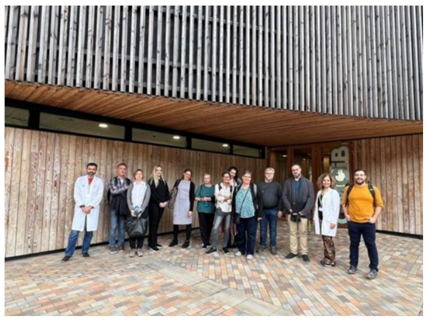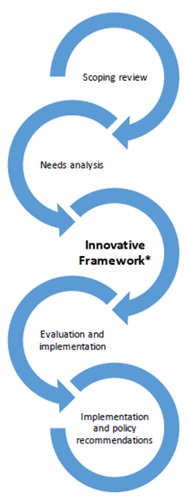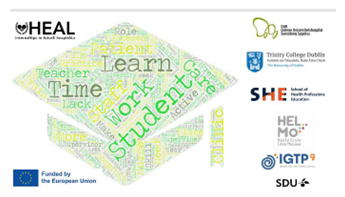Newsletter HEAL Vol. 2
The second partner meeting
We learned a lot and got a step further at the second partner meeting.
 From November 23 - 25, 2022, the second partner of the HEAL project was held in Barcelona. The aim of the partner meeting was for SDU and IGPT to present the findings from the scoping review and the needs analysis.
From November 23 - 25, 2022, the second partner of the HEAL project was held in Barcelona. The aim of the partner meeting was for SDU and IGPT to present the findings from the scoping review and the needs analysis.
Furthermore, OUH held a workshop to get the co-creation process of the innovative framework started.
The scoping reivew and the needs analysis will be published on the present the preliminary results of the two intellectual outputs in this newsletter.
The scoping review reveals three overall themes, which are:
- Placement or Clership Models Theme - presented data on different placements models in undergraduate nursing and medical education. This encompasses differenct organizational models, as well as models, where all- or a significant part of the placement has been replaced by technology-enhanced solutions, such as simulation or virtual methods.
- Didactic Methods Theme - primarily presented different technological methods for replacing or supplementing individual parts of a placement, but did not seek to replace the placement itself. These methods included online lectures, simulations or skills training, virtual simulations, blended learning and more.
- Preceptor and Learner Theme - primarily focused on factors between the learner and supervisor, such as method of learning, feedback and collaboration.
The needs analysis interestingly showed many similarities between the partner countries. The analysis is divided into four categories, which are:
• Teaching and learning
• Expectations
• Technologies
• Vision
- Teaching and learning - the main points within this categori is well prepared welcome, clear objectives, systems and structures, well prepared students, a need for more theory, the importance of the student/teacher interaction, more tumover.
- Expectations - the main points within this category is clear information, collaboration, responsibility, more specialities, good clinical teachers.
- Technologies - the main points within this category is video, simulation, virtual reality, gamification, e-learning, online learning.
- Vision - the main points within this category is asynchronous learning, newtechnologies, internships placed in different periods of the education programs.
The Project Plan
The HEAL Project consists of the 5 intellectual outputs shown in the figure.
Odense University Hospital are lead on the innovative framework. The innovative framework is the body of the project, and it is through the innovative framework that the end result of the HEAL Project - a toolbox, will be developed.

What is next?
In December, January and February, each partner will start the co-creation process with teachers and learners from their respective organisations. Each partner must prepare different tools that they with to test in corporation with teachers and learners.
The partners will meet in March for the third partner meeting in Maastricht. After the meeting the partners will run the pilot test in the spring of 2023, then evaluate before running the first testing round in the fall of 2023 and the second testing round in the spring of 2024.
During the testing round, the teachers and learners will give feedback to the tools they test. The aim of this process is to present a well-tested generic toolbox to adapt to any European context, as a supplement to the existing internships in the different countries.
We appreciate you taking the time to read this newsletter and hope that you will continue to follow our work to create innovative internships through co-creation for future hospitals.
The partners of the HEAL Project wish you a Merry Christmas and a Happy New Year.

